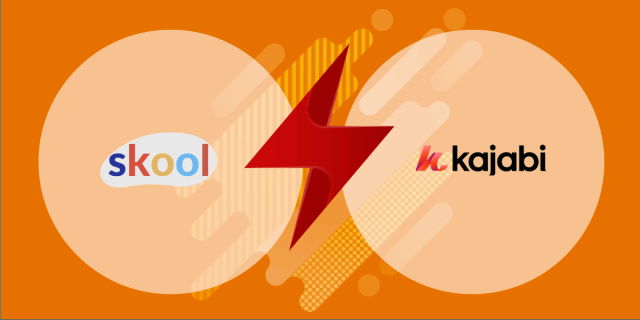You’ve spent months creating your course.
Recording every module. Perfecting every slide. Obsessing over audio quality.
But here’s where most creators completely bomb.
They use the same tired marketing tactics everyone else does. Facebook ads. Email blasts. Generic social media posts.
This guide is different.
Ready to market your online course the smart way?
Why traditional course marketing isn’t working anymore?
The game has fundamentally changed, and most course creators haven’t noticed.
We’re living in an AI-driven world where knowledge alone has lost its premium value.
Anyone can ask ChatGPT for information, watch YouTube tutorials, or find free resources on virtually any topic.
👉 Your potential students aren’t just looking for knowledge anymore – they’re seeking transformation, community, and personalized guidance.
Traditional marketing approaches like generic Facebook ads and mass email campaigns fail because they focus on selling information rather than selling results.
And today’s successful course creators understand that marketing must emphasize transformation, not just education. The strategies that worked in 2020 simply don’t cut it in 2025.
Use Content Multiplier
Before diving into tactics, you need a content system that works.
Most creators randomly post content and wonder why nothing sticks.
Here’s the framework that actually works: the Content Tree Model.
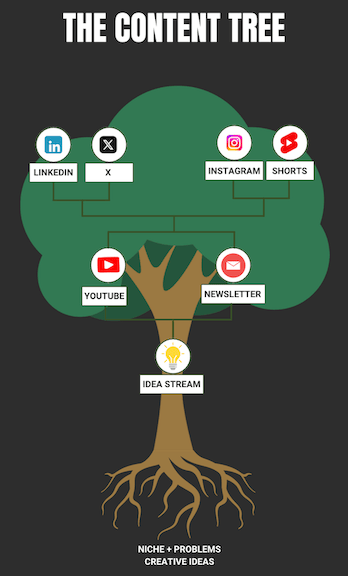
Use AI to break your course niche into subtopics.
For each subtopic, identify three things:
- Fears your audience has
- Obstacles they face
- Goals they want to achieve
Each fear and obstacle becomes a content idea.
Create long-form content around these, then multiply it across platforms. Start with Medium, expand to YouTube, build your newsletter from there.
It’s not about posting everywhere. It’s about creating once and strategically distributing for maximum impact.
Social media strategies that actually convert
Write for Medium publications (not your own profile)
Medium publications have built-in audiences hungry for your expertise.
Instead of starting from zero followers, you’re instantly reaching thousands of engaged readers.
Target publications in your niche with atleast 10K+ followers to begin with (and build on top).
For example, you can go with publications like “Better Marketing” for business courses or “UX Planet” for design courses already have your ideal students reading daily.
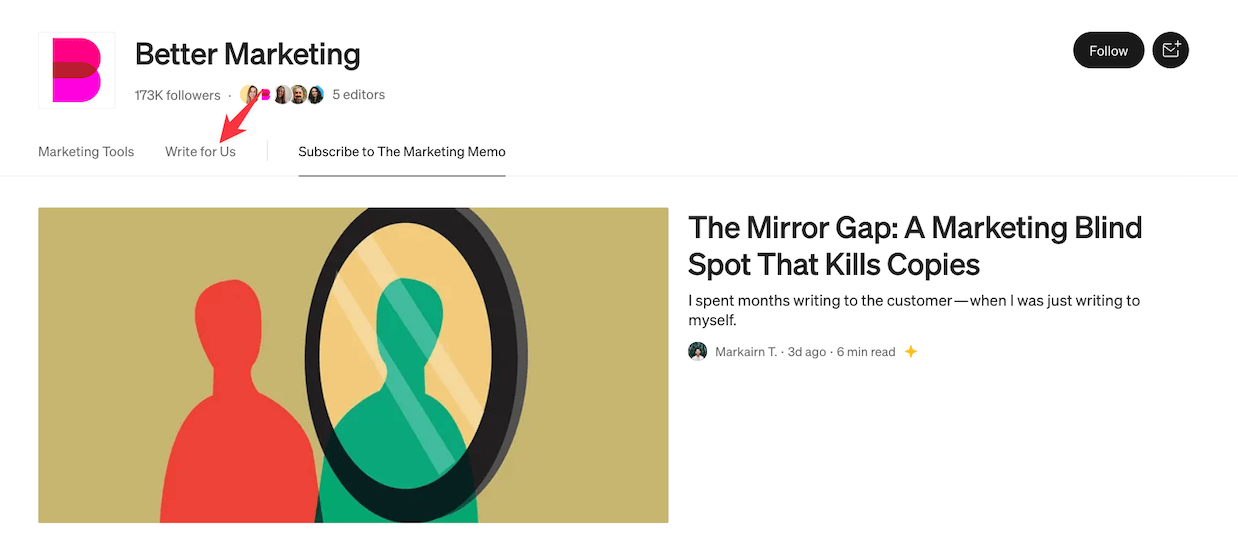
The outreach is simple: Find the editor’s contact in the publication’s “Write for Us” section. Send a personalized pitch with 3 specific article ideas that solve real problems for their audience. Include one sample paragraph to show your writing style.
Medium’s algorithm favors educational content, and course creators often see 5-10x more reach through publications versus personal profiles.
Create YouTube long-form content around audience pain points
Forget about viral short videos that disappear in seconds.
Long-form YouTube content builds genuine relationships with people who become your best students.
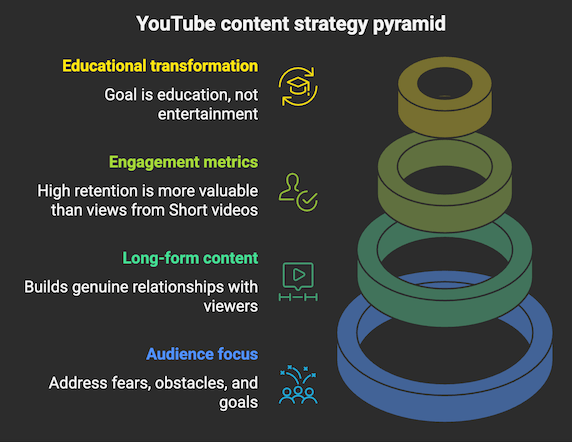
Focus on your audience’s fears, obstacles, and goals.
A 15-minute video solving a real problem creates deeper connections than 100 quick tips.
The viewer who watches your entire video is infinitely more likely to buy than someone who double-taps a 15-second clip.
A video with 500 views and high retention is worth more than 10K views with people clicking away after 30 seconds.
Don’t chase vanity metrics.
YouTube rewards engagement, and engaged viewers become paying students.
👉 Create detailed tutorials, case studies, and problem-solving sessions. Your goal isn’t entertainment – it’s education that leads to transformation.
Design “Micro Lead Magnets” for each piece of content

Generic ebooks are dead.
In the AI age, you need hyper-personalized lead magnets that speak directly to specific problems.
For every long-form piece you create, design a complementary lead magnet.
- Do you have a YouTube video about “Email Marketing Mistakes”? Create a “Email Template Checklist.”
- Medium article on “Productivity Systems”? Offer a “Daily Planning Template.”
The beauty is in the segmentation.
Someone who downloads your email templates is clearly interested in email marketing. Someone grabbing your productivity planner cares about time management.
Now you can send targeted follow-ups instead of generic newsletters.
Use Canva templates and ChatGPT to create these quickly. The conversion rates are 3-5x higher than one-size-fits-all lead magnets.
Document student success stories
Stop creating obvious testimonials.
Instead, interview your successful students in podcast-style conversations that feel natural and educational.
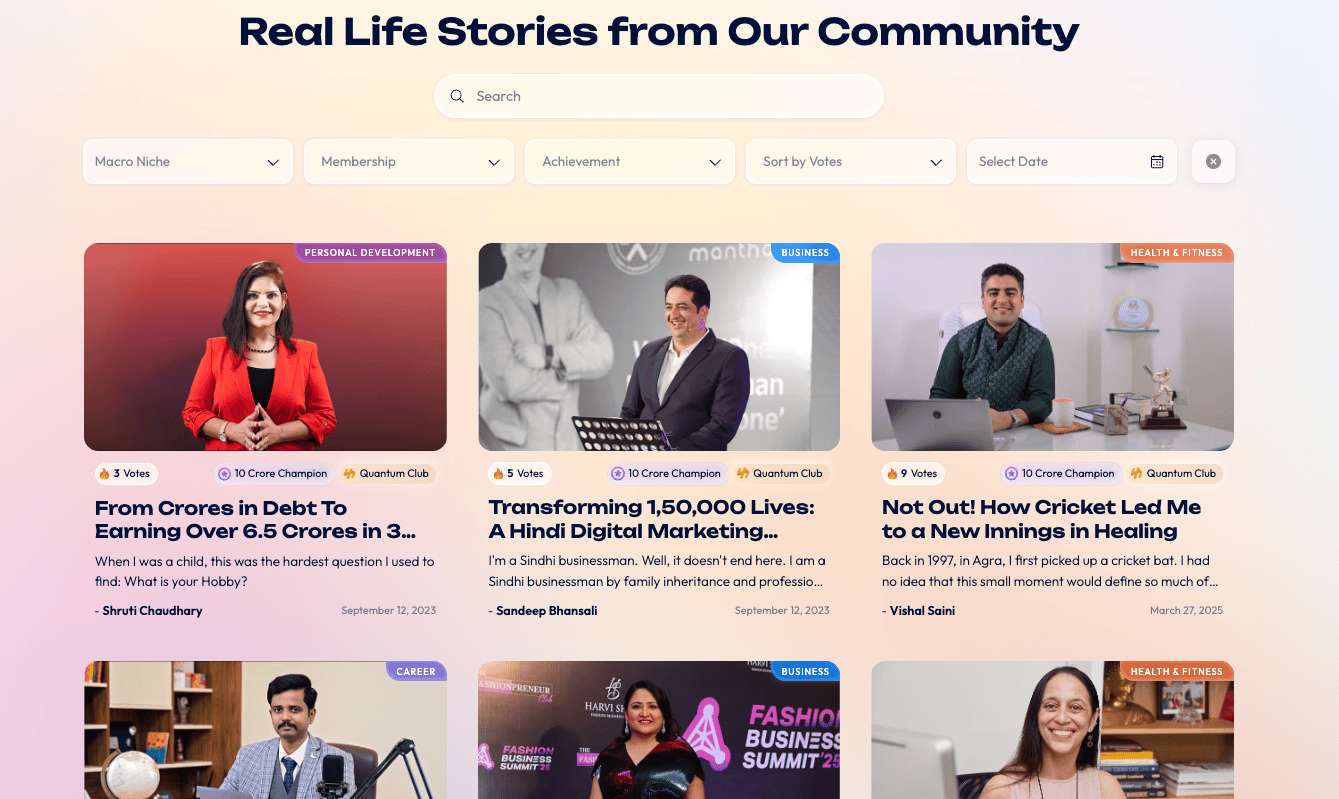
Ask them to walk through their journey, the obstacles they faced, and how they overcame them.
Let people organically discover they’re your students. Don’t announce it – let it emerge naturally in conversation.
These interviews serve multiple purposes:
- Valuable content for your audience.
- Indirect social proof for your course.
- Case studies for future marketing.
Share these across all platforms as educational content, not promotional material.
🔑 The key is authenticity. People can smell fake testimonials from miles away, but genuine transformation stories are magnetic.
Chunk them into TikTok educational series
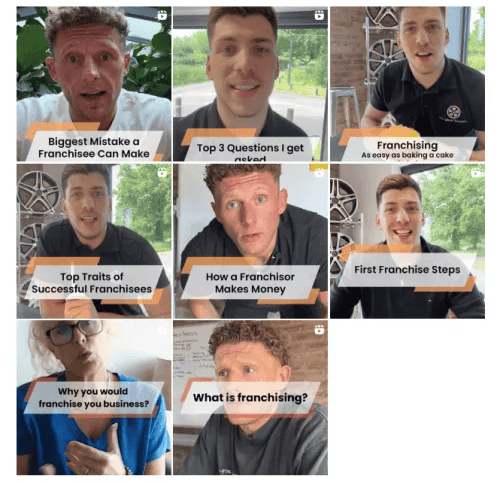
Once you have long-form content, AI can help you create short-form variations. But don’t just chop up videos randomly.
Take one YouTube video and break it into 5-7 TikTok videos, each focusing on one key point.
This keeps viewers coming back and positions you as the expert they should follow.
Use tools like Opus Clip or Vizard to automatically generate short clips, then manually edit for better flow.
👉 The goal isn’t virality. It’s education that builds trust. Keep the educational value high. TikTok users are surprisingly hungry for real learning, not just entertainment.
Execute strategic LinkedIn DM sequences
LinkedIn DMs work incredibly well for high-ticket courses and coaching. But this isn’t about sending spammy sales messages.
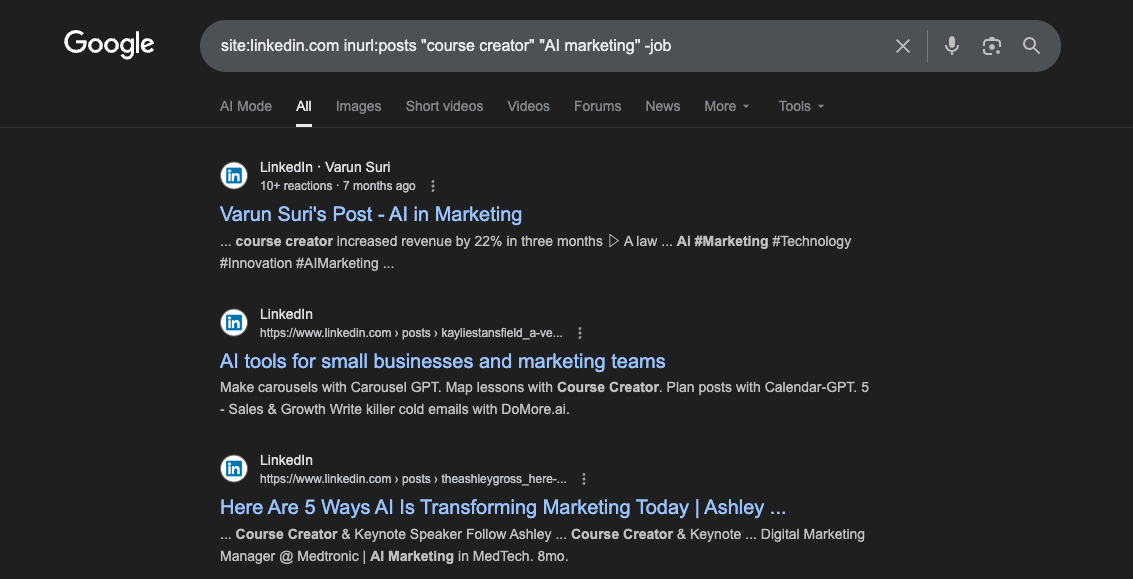
Here’s a step-by-step approach:
- Use Google search with
site:linkedin.com inurl:posts "course creator" "AI marketing" -jobto find relevant influencers who are posting content related to course creation with AI marketing. - Engage genuinely with their content for 3-5 days
- Like, comment thoughtfully, and share their posts
- Send a connection request with a personalized note
- Wait 2-3 days after acceptance before sending your first DM
- Lead with value – share a resource, ask a thoughtful question, or offer an insight
This approach takes time, but for courses over $500, the conversion rates justify the effort. One high-quality conversation beats 100 cold outreach messages.
Community building (because algorithms can’t be trusted)
Building an audience on social media is like building a house on rented land.
One algorithm change and your reach disappears overnight.
That’s why smart course creators focus on owning their audience through communities where they can directly engage and warm up potential students.
Build a Discord server for Gen Z audiences

Discord isn’t just for gamers anymore.
If you’re targeting Gen Z learners, this is where they naturally hang out.
The chat interface creates that personal connection you can’t get with traditional social media platforms.
Here’s the thing about Discord – it feels less “salesy” than other platforms.
You can direct your cold traffic straight to your server, and they won’t feel like they’re being pushed into a funnel.
The real-time conversations, voice channels, and community vibe make it perfect for course creators who want genuine engagement.
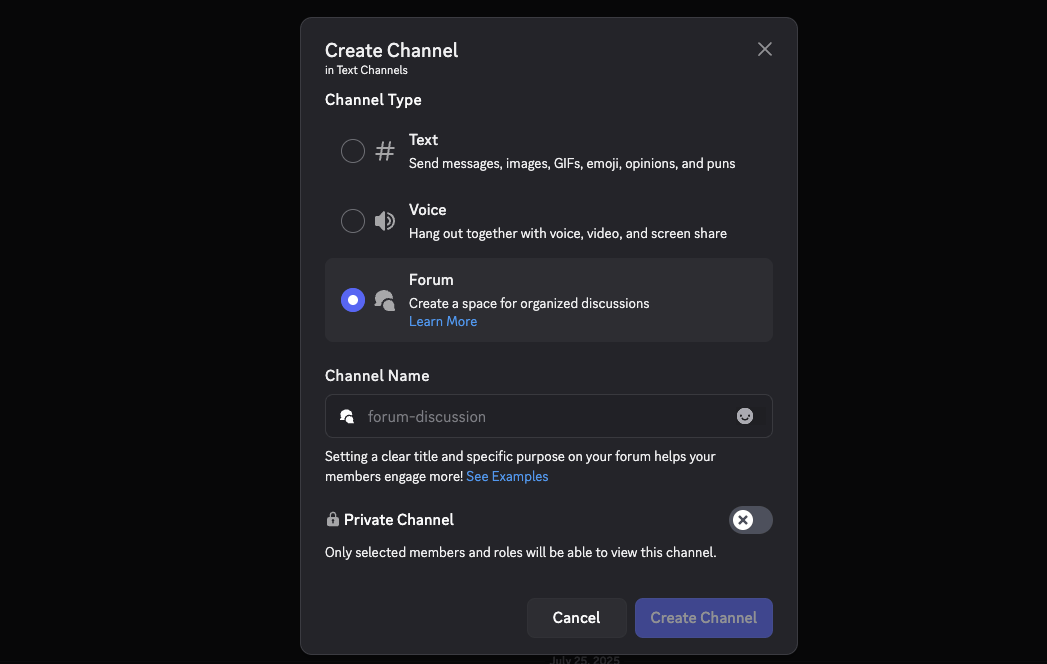
Set up different channels for different topics related to your course.
For example, you can create a “questions” channel, a “wins and progress” channel, and maybe even a voice channel for weekly office hours.
The beauty of Discord is that conversations happen naturally, and your community members will start helping each other – which is exactly what you want.
Launch a Skool community (the gamified approach)
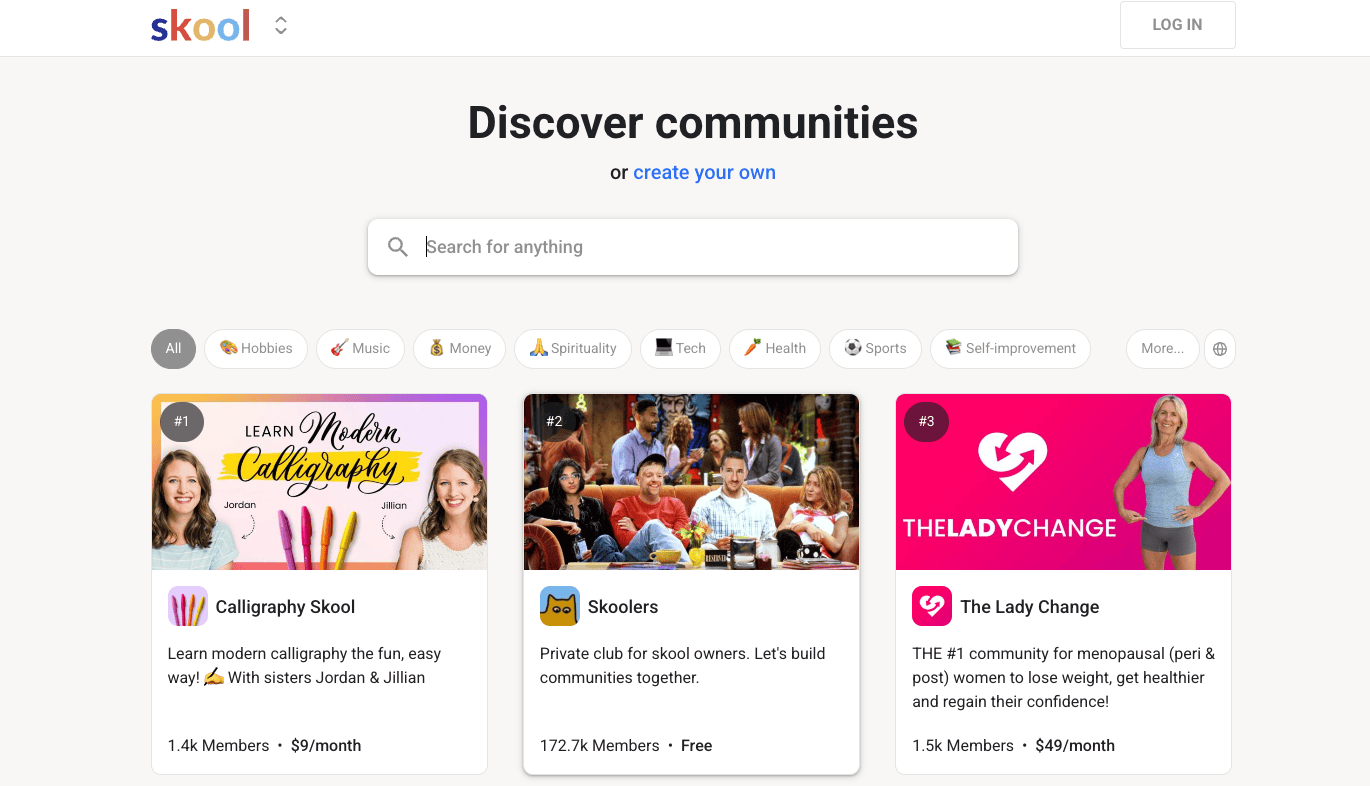
Skool is specifically built for course creators and communities focused on transformation.
Starting at just $9/month, it’s designed around gamification – which means higher engagement rates compared to platforms like Circle or Kajabi.
The gamification element is crucial here. People earn points, level up, and compete on leaderboards just for participating.
This isn’t just community building – it’s community addiction.
🔑 The key is posting consistently until you hit 50-100 members, then letting the gamification take over to drive organic engagement.
Create a Facebook community (yes, it still works)

Before you roll your eyes at Facebook, hear me out.
If you’re in a micro-niche, Facebook communities can still be goldmines. The platform has billions of daily users, and for many people, checking Facebook is still part of their morning routine.
The secret sauce?
Facebook communities work best when they’re hyper-specific.
Instead of “Digital Marketing Tips,” go for “Digital Marketing for Local Plumbers” or something equally niche.
The more specific, the better the engagement.
Here’s what most people don’t tell you – Facebook’s algorithm can limit your reach just like it does for pages.
💡 But here’s the workaround: focus on sparking conversations rather than just posting content. Ask questions, create polls, and encourage members to tag each other.
The algorithm loves engagement, so give it what it wants.
Design targeted email sequences that actually convert

Email marketing isn’t dead. But, bad email marketing is dead.
The difference between a 2% conversion rate and a 20% conversion rate comes down to one thing: segmentation based on behavior and interests.
Remember those micro lead magnets we talked about? Each download tells you exactly what someone cares about.
Create separate email sequences for each topic.
Someone who downloaded your “Social Media Templates” gets a 5-email sequence about social media marketing, not generic course promotion.
Here’s a sequence that works:
- Email 1: Deliver the lead magnet + quick win.
- Email 2: Share a personal story related to the topic.
- Email 3: Address the biggest obstacle they’re facing.
- Email 4: Case study or success story.
- Email 5: Soft pitch for your course as the solution.
💡 Keep emails conversational and valuable. Every email should be worth reading even if they never buy your course.
Direct engagement (where relationships turn into revenue)
Run weekly webinars that build genuine authority

Webinars are the ultimate trust-building tool.
But most creators treat them like hour-long sales pitches.
👉 Want to know how to make your webinars engaging and memorable? Check out my detailed guide here that walks you through the process step by step.
The ones that convert do the opposite – they deliver massive value first, then make a natural transition to the course offer.
Choose one specific pain point your audience faces and spend 45 minutes solving it completely.
Show your screen, walk through examples, answer questions in real-time. By the end, they should have a genuine breakthrough moment.
After 5-7 live webinars, record one successful session and automate it using tools like WebinarJam or EverWebinar.
Drive traffic through organic social media posts, but also invest in targeted YouTube and Facebook ads to scale faster.
🔑 The key to webinar success? Solve first, sell second. When people see the transformation you can create in one hour, they’ll trust you with their money for the full course.
Answer questions strategically on Quora and Reddit

It’s not about spamming links – it’s about establishing yourself as an expert through valuable contributions.
Quora strategy:
- Follow relevant topics and set up notifications
- Answer 2-3 questions daily with detailed responses
- Add resource links in your bio, not in answers
Reddit strategy:
- Build karma through genuine participation first
- Establish credibility in relevant subreddits
- Host an AMA about your expertise
- Follow up with people who DM you afterward
Leverage (work smarter, not harder)
Cross-promote with complementary creators strategically

The secret to successful cross-promotion isn’t finding anyone with a similar audience size.
It’s finding creators whose audience has the exact problem your course solves, but who don’t compete directly with you.
🔑 Use this process to find the perfect partners: Identify what happens before and after someone needs your course. If you teach Facebook ads, find creators who teach business fundamentals (before) or conversion optimization (after). Their audiences are perfect for you.
Reach out with specific collaboration ideas like joint webinars, audience swaps, or bundle partnerships.
Always lead with what you can offer them first.
A simple message like: “I noticed your audience struggles with [specific problem]. I just created a resource that solves this. Would you like me to share it with your community?”
The conversion rates from warm referrals are 5-10x higher than cold traffic.
Affiliate marketing funnels can benefit greatly from this approach. One good partnership can replace months of content marketing.
Guest appear on industry podcasts (the systematic approach)

Podcast guesting is the ultimate leverage play.
One 45-minute conversation can reach thousands of your ideal students. But most creators approach it randomly and get rejected repeatedly.
Here’s how to systematically approach podcast guesting:
- Use ChatGPT to find targeted podcasts: Simply prompt – “
Find 20 podcasts about [your niche] that interview [your type of expert] and have 500+ downloads per episode“ - Research each host’s recent episodes: Take time to understand their interview style and audience
- Send an outreach email with personal touch: Include a comment about a recent episode, 2-3 specific talking points you could cover and your social proof (previous interviews, course success stories, or impressive results)
Focus on mid-tier podcasts (1K-10K downloads) rather than trying to land Joe Rogan immediately.
These hosts are more accessible and often have highly engaged niche audiences.
Create strategic beginner courses on Udemy
Udemy has over 40 million students actively searching for courses.
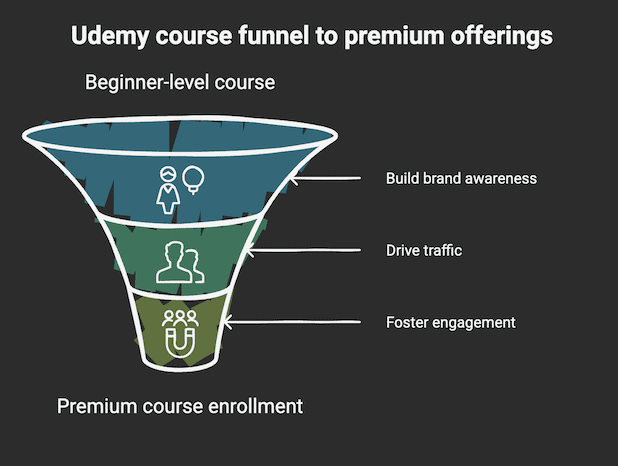
Instead of competing with your main course, create a beginner-level version that acts as a funnel to your premium offering.
Your Udemy course should solve a specific, smaller problem that naturally leads to the bigger transformation your main course provides.
Price it competitively ($20-$50) and focus on getting positive reviews quickly.
Inside the course content, naturally mention your other resources like your YouTube channel, blog, or email list.
⚠️ Udemy doesn’t allow direct course promotion, but you can build your personal brand and drive students to discover your premium offerings organically.
This strategy works especially well if you already have a strong personal brand.
Your Udemy students become familiar with your teaching style and eventually graduate to your high-ticket courses.
👉 Also read:How Much Udemy Course Creators Earn in 2025? (10 Examples)
Unconventional marketing ideas that actually work
Use “anti-course” marketing with qualification processes

Stop trying to convince everyone to buy your course.
Instead, tell people exactly who shouldn’t buy it. This psychological reversal makes the right people want it even more.
Create a qualification quiz or application process using online quiz makers.
Ask specific questions about their current situation, commitment level, and goals. Then genuinely reject people who aren’t a good fit and explain why.
This does three powerful things:
- It positions your course as exclusive and valuable.
- It attracts higher-quality students who are more likely to succeed.
- It reduces refund requests because people self-select properly.
Run a “Pay What You Feel” workshop to build trust

Traditional pricing creates barriers.
By offering a condensed version of your course content as a “Pay What You Feel” workshop, you remove financial objections while building goodwill and trust.
Host a 90-minute virtual workshop teaching one complete module from your course. At the end, let attendees decide what they want to pay based on the value they received.
Make it clear there’s no minimum – they can even attend for free.
👉 Here’s why this works: People who experience transformation are often generous, many paying more than you would have charged. Those who can’t afford much get a taste of your teaching style and become advocates.
And the psychological principle of reciprocity means they’re more likely to invest in your full course later.
Build a waitlist before you even create the course
Demand creates desire.
Instead of creating first and hoping people buy later, flip the process and build effective sales funnels.
💡 Build anticipation and collect email addresses before you record a single video. Share your course idea on social media and ask people to join a waitlist for “early access.”
Send weekly updates about your progress, share behind-the-scenes content, and ask for input on curriculum decisions.
The waitlist becomes your focus group and your first customers.
When you finally launch, you already have proven demand and a group of people emotionally invested in your success.
Fail publicly to build authentic connection
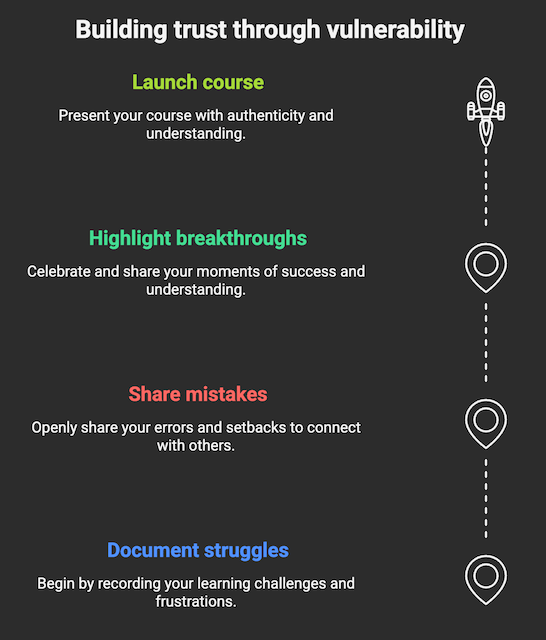
Vulnerability builds trust faster than perfection ever will.
Document your own learning struggles in the same topic you’re planning to teach.
Share the mistakes, the frustrations, and the breakthrough moments.
This strategy works especially well for skill-based courses.
Because people connect with the journey, not just the destination.
When you eventually launch your course, you’re not just another expert making claims. You’re someone who genuinely understands the struggle because they lived it publicly.
This authenticity often allows you to price your online course more competitively.
👉 Read this:Course Design Principles: Craft Effective Learning Experiences
Out-of-the-box ideas for maximum impact
Host local meetups that bridge offline to online

Local meetups create deeper connections than any digital strategy.
If you’re in a major city, organize monthly gatherings around your course topic.
Even 5-10 people creates powerful word-of-mouth marketing.
Structure these as educational workshops, not sales events.
Teach something valuable, facilitate networking, and let people discover your expertise naturally.
The attendees become your biggest advocates because they’ve experienced your teaching in person.
👉 Many successful course creators start locally and expand digitally. The relationships you build face-to-face often become your first customers, best testimonials, and strongest referral sources.
Partner with co-working spaces for educational sessions

Co-working spaces are hungry for valuable programming for their members.
Instead of renting conference rooms, partner with spaces to provide free educational sessions that showcase your expertise.
This works especially well for business and productivity courses.
You can frame it as “Free Workshop: Productivity Systems That Actually Work” rather than a course promotion.
Focus on delivering value, and naturally mention your broader course offerings during Q&A.
Many co-working spaces will promote your session to their members, giving you access to exactly the type of people who invest in self-improvement and online learning.
Wrapping up
Pick 3-5 strategies from this guide that align with your strengths and audience.
Master those before moving on to others.
The creators who succeed aren’t the ones who try everything. They’re the ones who consistently execute a few strategies exceptionally well.
Remember: In the AI of age, authentic connection and genuine transformation matter more than clever tactics.
Focus on truly helping people, and the sales will follow naturally.




